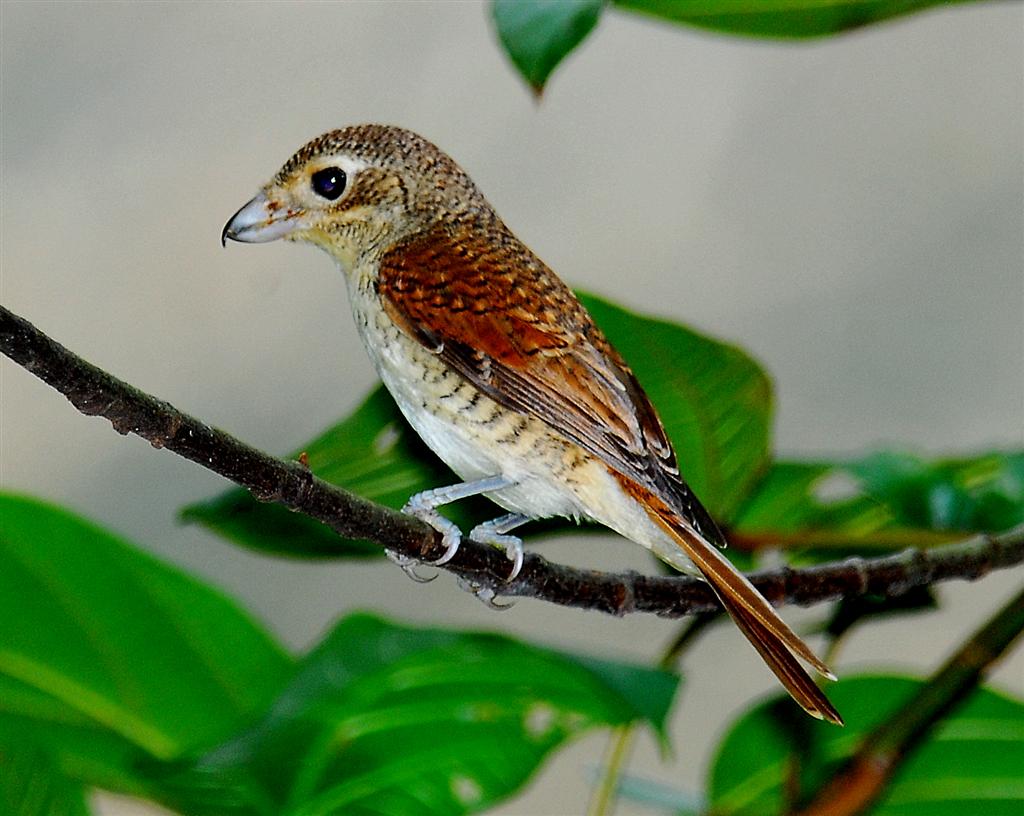Hello ladies and gents this is the Viking telling you that today we are talking about
Tiger shrike
The tiger shrike or thick-billed shrike (Lanius tigrinus) is a small passerine bird which belongs to the genus Lanius in the shrike family, Laniidae. It is found in wooded habitats across eastern Asia. It is a shy, often solitary bird which is less conspicuous than most other shrikes. Like other shrikes it is predatory, feeding on small animals. Its nest is built in a tree and three to six eggs are laid.
It derives its name from the tiger-like pattern of its upperparts which are reddish-brown with dark bars. Adult males have white underparts and a grey head with a black mask. Females and young birds are duller and browner and young birds lack the grey and black on the head.
Shrikes are not usually able to catch birds in flight so instead will fly over their victims and dive down on them stunning them with a powerful blow to the back. The smaller bird will fall to the ground with the shrike immediately following and if the prey is not yet dead will bite through the vertebrae at the base of the neck. The shrike will then fly away with its bird and take it to its larder, a thorny shrub or barbed wire fence where it will impale it. They have also been known to hang their victims from the fork of a tree branch, either eating them straight away or keeping it for later.
It is a fairly small, stocky shrike, 17–19 cm long. Males weigh 27-29 grams and have a wing length of 77.8-83.9 mm, a tail length of 66.9-75.0 mm and a bill length of 14.1-15.9 mm. Females weigh 29-37 grams and have a wing length of 79.5-85.3 mm, a tail length of 66.3-79.1 mm and a bill length of 14.8-16.7 mm.
The thick bill is blue-black with a black tip and the legs are grey-black. The adult male's back, rump and shoulders are reddish-brown with blackish bars creating a tiger-like pattern. It has a black forehead and mask and grey crown and nape. The wings and tail are brown and the underparts are white, sometimes with faint barring on the flanks.
Females are duller and browner than the males with a less extensive black mask, less grey on the head, a narrow white stripe above the eye, pale patch between the bill and eye and buff-white flanks with black barring. Juvenile birds have dark scale-like markings on the head, back and underparts and lack the grey and black on the head. Their bill has a pale base and the eye appears large due to a pale ring around it.
And as always have a chilled day from the Viking

Comments
Post a Comment